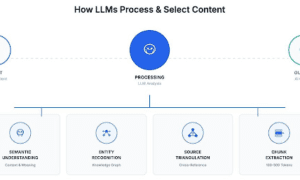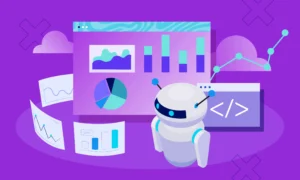Are you ready to imagine a future where clean, sustainable energy powers every aspect of our lives? A tomorrow where the hum of fossil fuels and the burden on our environment is replaced by the brilliance of renewable energy. In today’s blog post, we delve into the electrifying journey towards 100% renewable energy and how it holds the key to unlocking a brighter tomorrow for generations to come. Buckle up as we explore this pulsating path that leads us towards not just a greener world, but an electrified one.
What is Electrification?
Renewable energy is becoming more and more popular each year. What is renewable energy, you ask? Simply put, renewable energy is energy that comes from sources that are not harmful to the environment or destructive to our resources. Solar, wind, geothermal, hydroelectric, and biomass are all types of renewable energy. And the best part is that these sources can be easily electrified!
Without going into too much detail, today’s electric grids are typically based on alternating current (AC). AC was developed in the late 1800s as an easier way to power railroad lamps and streetlights. It uses a continuous flow of electricity to drive currents through wires. This type of system works well in areas with lots of straight lines and long distances between homes and businesses.
However, AC doesn’t work very well in places like homes and neighborhoods where there are lot of curves in the streets and lots of buildings close together. That’s because AC needs a constant flow of electricity to keep the wires hot so they can light up lamps or power motors. But when you have lots of little wires coming out from all the different houses in a neighborhood, it’s easy for one lamp or electric motor to trip another one by accident.
That’s why we switched over to using Alternating Current Type Direct Current (AC/DC) back in the early 1900s. With AC/DC, instead of using a continuous flow of electricity, each household gets its own “pulsing” supply of electricity. This system works great in places like homes and neighborhoods because it can automatically “step up” the power when there’s more demand from one household, then step down the power when there’s less demand from another household.
So what does all of this have to do with electrification? Well, today’s electric grids are based on AC/DC technology. But eventually, we’re going to need to switch over to a new type of grid that uses more renewable energy sources. And that’s where electrification comes in!
With electrification, we can convert our existing AC/DC systems into something that uses more renewable energy sources by using solar panels, wind turbines, hydroelectric dams, or even geothermal plants. In other words, we can turn our old electric grids into something that is completely powered by renewable energy!
Nowadays, many countries are already moving forward with electrification projects. For example, in Germany, all of the residential buildings are required to have solar panels installed on their roofs. And in Portugal, they’ve been building a giant offshore wind farm called “the Walney offshore project” that will cover an area the size of Delaware!
So what does this all mean for us as consumers? Well, it means that we’re going to see an increase in the amount of renewable energy that we use in our everyday lives. And that’s definitely a good thing!
How does Electrification work?
Electricity comes from electricity plants. These plants take energy from the sun or other sources and turn it into electric currents that can run through wires and powered devices. Electricity can come from a number of sources, including renewable energy like solar and wind.
Renewable energy is the power source of the future. It’s our best hope for averting disastrous climate change, reducing dependence on foreign oil, and creating jobs in rural America. Renewable energy is clean—it doesn’t produce greenhouse gases that trap heat in the atmosphere and raise global temperatures. Renewable energy also provides reliable power: even when the sun isn’t shining or the wind isn’t blowing, renewable energy sources like solar and wind can keep your lights on (and your appliances running) just like traditional fossil-fueled electricity..
There are many ways to generate renewable electricity. The most common types are hydroelectric dams, solar panels, wind turbines, geothermal power plants, wave power systems, and small-scale biomass generators. Renewable energy sources vary in terms of their output–some generate more power than others at any given time–but they all have one thing in common: they don’t use petroleum products to create electric currents that turn gears or generators.
Most renewable electricity comes from hydroelectric dams – these are large structures built along rivers or other bodies of water where water is forced through turbines to create electric current.. Solar panels sit on roofs and generate power when the sun shines on them. Wind turbines are tall, slender structures that harness the wind to create electric current. Geothermal power plants tap the earth’s finite heat energy to turn turbines and generate electric current. Wave power systems use the ocean’s waves to turn generators. And small-scale biomass generators burn wood, grass, or other organic matter to create electricity.
Renewable energy is growing quickly around the world–in 2016, it generated about 18 percent of global electricity. That number is expected to grow rapidly in coming years as costs for renewable energy technologies continue to decline..
Renewable energy comes from a variety of sources: solar panels, wind turbines, hydroelectric dams, and biomass generators .
Renewable energy is clean: it doesn’t produce greenhouse gases that trap heat in the atmosphere and raise global temperatures. It also provides reliable power: even when the sun isn’t shining or the wind isn’t blowing, renewable energy sources like solar and wind can keep your lights on (and your appliances running) just like traditional fossil-fueled electricity.
Advantages of Electrification
Electric vehicles offer a number of benefits that make them a desirable choice for transportation. These include lower emissions, fuel efficiency, and reduced reliance on oil.
Electric Vehicles vs. Gasoline Cars
Electric vehicles are powered by electricity from a battery. This means that they have no emissions, which is great for the environment. Gasoline cars release pollutants when they’re combustion, such as nitrogen oxides and carbon dioxide. Electric vehicles also have low levels of emissions during their first few thousand miles, thanks to their zero-emission technology.
[1]Electric Vehicles vs. Fossil Fuels
One of the biggest benefits of electric vehicles is that they don’t need to use fossil fuels to power them. This is important because it helps reduce our reliance on oil resources and cuts down on greenhouse gas emissions. Fossil fuels are found Mostly in the form of coal and oil but also natural gas and some other types mined from underground.
[2]One downside of electric vehicles is that they require a lot more rechargeable batteries than gasoline cars do. It’s estimated that it would take about ten years for electric cars to completely replace gasoline cars in the market. However, the environmental benefits make up for this issue in most cases.
What are Renewables?
There is no doubt that renewable energy has become an increasingly important part of the global energy landscape. With ever-growing trends towards electrification and sustainability, renewables are quickly becoming a more dominant force in the world’s energy mix.
Renewables are sources of energy that rely on natural processes to create electricity, such as wind, solar, water and geothermal power. These sources of energy are essentially free when it comes to economy of scale – even without subsidies – making them very competitive with traditional forms of energy generation.
One thing renewable energies have in common is that they can continue supplying power even if there is a blackout or other disruption. This means that renewable energies can play an important role in ensuring continuity of service for both consumers and providers alike. In fact, many utilities are now turning to renewables as an essential part of their overall strategy for future growth.
Given their widespread appeal and continuing growth potential, renewables will undoubtedly continue to play an important role in our growing sustainable future.
The History of Renewables
Renewables have been around for centuries, with the first electric car appearing in 1891.
The history of renewables can be broken down into three main periods: the early period, 1950-75; the middle period, 1976-2000; and the current period, 2001-present.
In the early period renewables accounted for only a small fraction of energy generation. This was largely due to two reasons: a lack of technology and a lack of access to resources. Areas like wind and solar were not viable options because they couldn’t generate large amounts of power, and oil was still the dominant source of energy.
During the middle period renewables became more prevalent thanks to advances in technology and increased access to resources. Improvements in wind and solar technologies allowed them to become more viable options, while new policies were put into place that encouraged adoption of renewables. These policies included tax breaks, government subsidies, and mandates from countries like China and India.
The current period is marked by continued growth in renewable energy usage. This is mainly due to several factors: increasing awareness about climate change; advancements in technology; cost reductions; improvements in grid reliability; and global efforts to reduce carbon emissions. In spite of these benefits, there are still some limitations to renewable energy that need to be addressed.
The Energy Processes of Renewables
The energy process of renewables is one that relies on solar, wind, hydroelectric, geothermal and bioenergy. In this article, we will discuss the different renewable energy sources and how they work.
Solar Energy: Solar panels harvest energy from the sun by converting sunlight into an electrical current. The more sunlight that hits a solar panel, the more electricity it can generate. Solar energy can be used to power homes, businesses and even entire towns.
Wind Energy: Wind turbines use the wind to power themselves. The blades on a wind turbine turn in order to create a moving . This motion turns a generator which creates electricity. Typical wind farms consist of dozens or even hundreds of small turbines spread out over a large area.
Hydroelectric Energy: Hydroelectric dams use water currents to turn generators which produce electricity. The power that is produced from hydroelectric dams is often very reliable because rivers are always flowing nearby.
Geothermal Energy: Geothermal energy comes from hot rocks below the Earth’s surface. When these rocks are heated by the Earth’s core, they expel water and heat which can be converted into electricity using turbines or heat pumps .
Bioenergy: Bioenergy is made up of any energy derived from organic matter. Biofuels, such as ethanol and biodiesel, are made from plant-based materials. They can be used to power cars, homes and factories.
Types of Renewables
Renewables are a growing sector of the energy industry, with cleaner sources of energy becoming more and more popular. Technologies like solar and wind power provide a consistent stream of electricity regardless of the weather, making them an ideal option for renewable energy.
There are many different types of renewables, each with its own advantages and disadvantages. Here is a brief overview of some of the main types:
Solar: Solar energy is one of the most popular forms of renewable energy. Solar panels convert sunlight into electricity, which can be used to power homes or businesses. Because solar panels need direct sunlight to work, they are not always practical in areas with heavy clouds or fog.
Wind: Wind turbines use wind to create power. Wind turbines can be used to generate electricity both onshore and offshore. Offshore wind farms have been particularly successful in recent years because they can be situated near deep water ports, which makes them less susceptible to disruptions from weather conditions.
Hydroelectricity: Hydroelectricity is produced when water is pushed through turbines to produce power. This type of renewable energy is especially popular in Europe because it has very low emissions compared to other sources of electricity like coal or gas.
Solar, Wind, Hydro, and Geothermal energy
Renewable energy, which includes solar, wind, hydroelectric, and biomass energies, is the primary focus of policymaking in many countries around the world. In 2014, renewable energy supplied over 27% of global electricity generation. Some renewables are intermittent and rely on weather patterns for production; this makes them less reliable than other forms of energy storage and transport. However, given that renewables have a lower environmental impact than traditional sources of energy, such variability can be offset through better planning and efficiency. Hydroelectric power has the highest capacity factor (percentage of total generated power) among renewable resources. Solar radiation and wind speeds vary throughout the day and year due to weather conditions; so these resources must be matched with when they’re most productive. Geothermal energy can tap hot underground rocks to produce steam that can be used to generate electricity.
Conclusion
The future of renewable energy is bright and we must act now to take advantage of it. The electric vehicle revolution is just the beginning – we can transition to a 100% renewable energy future through electrification. Governments and businesses must embrace this change in order to prevent catastrophic climate change and secure our economic future. We cannot afford to wait any longer, let’s get started.



































